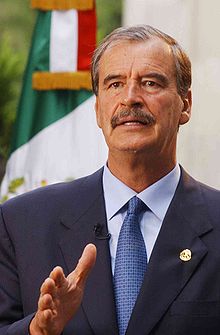
Colosio
Born on February 10, 1950, in Magdalena de Kino, Sonora, Colosio grows up with political fervor running through his veins as the son of Luis Colosio Fernandez (a descendent of 16th Century immigrants to "New Spain" from Italy), a member of the PRI and two-time senator in the Mexican Congress representing the Sonora region. Following in his father's footsteps is always the plan, and
after getting a degree from the prestigious Instituto Technologico y de Estudios Superiores de Monterrey, in 1972 joins his father's party, and then continues his post-graduate education at the University of Pennsylvania and the International Institute for Applied Systems Analysis in Austria. In 1979, he is back in Mexico and ready to put his education to use, joining the country's Ministry of Budget and Planning under the guidance of future president, Carlos Salinas de Gortari.

The Monterrey Campus
A political skyrocket with big plans for himself and his country, Colosio is elected to Congress in 1985, serves on the PRI's National Executive Committee, directs the successful presidential campaign of his friend, Carlos Salinas, and in the same election, is elected to the Senate, representing the state of his birth, Sonora. He continues to add to his political resume by serving in the cabinet of Salinas in the role of the newly created position of Social Development Secretary. In 1993, the PRI makes him their next candidate for the office of president (the Mexican constitution allows a president only one term).

Salinas
A seemingly slam dunk to become Mexico's next president, trouble begins for Colosio when he gives a speech on March 6, 1994, in which he praises the indigenous communities of the land, condemns government abuses, and vows to fight for the people's independence from government ... positions favored by the then troublesome left-wing guerrillas of the Zapatista Army of National Liberation (EZLN) of the province of Chiapas, but not the reigning members of the PRI.
Campaigning
In the early evening of March 23, 1994, Colosio is campaigning in the Tijuana slums of Lomas Taurinas, moving through a packed crowd of well-wishers while mariachi music plays, when he is shot in the head, from almost point blank range, by a .38 Special wielded by 22-year-old factory worker, Mario Aburto Martinez, of Zamora de Hidalgo, Michoacan ... he leaves behind a widow, two children, and a grieving nation. Arrested immediately at the scene, Martinez confesses to the crime at trial and is sentenced to 42 years in prison (Mexico does not have the death penalty and Martinez is currently behind bars at the La Palma prison in Almoloya de Juarez) ... but is never clear as to why he murdered Colosio, claiming he is a pacifist and the gun went off by accident. And like America's JFK assassination in Dallas, the questions and conspiracy theories instantly begin.
Accident (From You Tube Video)?
In Custody
How could Martinez shoot Colosio from one side in the head, but two and half seconds later, also shoot him in the stomach from the opposite side? Why did a witness claim Martinez was wearing a security arm band earlier in the day, and if he was, where did he get it from? Why do some witnesses say they saw another shooter? Why were Vincente Mayoral, Rodolfo Mayoral, and Tranquilino Sanchez arrested for blocking the path of Colosio's bodyguards, but then released. Why did Othon Cortez Vasquez, a driver for the PRI, claim he was arrested by the government and tortured for 18 months to admit he fired the second shot? Were the shooting deaths of Jesus Romero Magana (14 times!), the first federal prosecutor to interrogate Martinez, and Jose Arturo Ochoa (twice in the head and twice in the back), another member of the first interrogation team, part of an on-going conspiracy (or eight other assassinations tied to the Colosio killing, including the Tijuana police chief who was conducting his own investigation ... while some conspiracy believers have the total as 15 or higher). Did Colosio's widow really die of pancreatic cancer while she was investigating the case on her own. How were both the gun and the bullets in the case all lost? Why did several witnesses testify to seeing multiple Martinez look-a-likes (up to seven in one case) at the scene of the crime? Why were seven members of the assassin's family granted political asylum to live in California? And on and on it goes ...
Moments Later
Multiple investigations and four special prosecutors later, no one can answer the questions definitively, and most Mexicans do not believe the official story that a lone gunman took out the youthful candidate that they held so much promise for. What is known is that divisions within the PRI were illuminated and weakened the party to the extent that six years later, their decades old hold on political power was finally broken by the presidential election of Vincente Fox in 2000.

Fox
The reform president that never was ... rest in peace, Luis Donaldo Colosio-Murrieta ... still missed by the people of Mexico.

Memorial
Sad end to a promising politician.
ReplyDelete